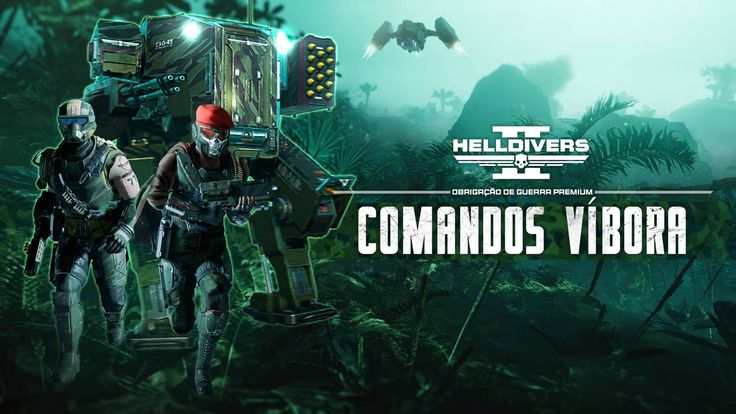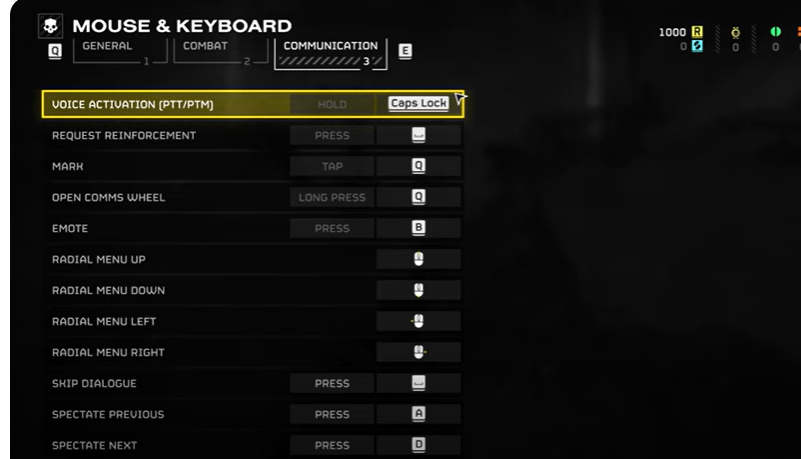Helldivers 2, the anticipated sequel to the popular cooperative twin-stick shooter, brings a plethora of new features and enhancements to the table. Among these features, the push-to-talk (PTT) button stands out as a crucial tool for effective communication during intense gameplay. This article explores the intricacies of the push-to-talk button in Helldivers 2, providing a detailed analysis of its importance, functionality, and impact on the overall gaming experience. We will cover everything from its basic usage to advanced strategies, ensuring a comprehensive understanding for both new and veteran players.
Introduction to Helldivers 2
Helldivers 2, developed by Arrowhead Game Studios, continues the legacy of its predecessor with intense cooperative gameplay, a deep sense of camaraderie, and challenging missions that require precise teamwork and coordination. The game is set in a dystopian future where players take on the role of elite soldiers known as Helldivers, tasked with defending Super Earth from various alien threats.
Importance of Communication in Helldivers 2
The Role of Teamwork
In Helldivers 2, teamwork is paramount. Each mission requires players to work together, combining their skills and strategies to overcome formidable enemies and complex objectives. Effective communication is the bedrock of successful teamwork, allowing players to coordinate actions, share information, and adapt to evolving situations on the battlefield.
The Push-to-Talk Button: An Overview
The push-to-talk button is a vital tool that enables players to communicate with their teammates in real-time. Unlike open microphones, which can pick up and transmit all background noises, push-to-talk requires players to press a designated button to transmit their voice. This method ensures that only relevant and intentional communication is broadcast, reducing noise and enhancing clarity.
Setting Up the Push-to-Talk Button
Default Settings and Customization
Helldivers 2 comes with default key bindings for the push-to-talk button, typically assigned to a convenient key on the keyboard or a button on the controller. However, players can customize these settings to better suit their preferences. Customizing the push-to-talk button involves accessing the game’s settings menu, navigating to the controls section, and selecting the desired key or button for push-to-talk functionality.
Hardware Requirements
To use the push-to-talk feature effectively, players need a microphone. Most gaming headsets come with built-in microphones, but players can also use standalone microphones. Ensuring the microphone is properly connected and configured within the game’s audio settings is essential for clear and reliable communication.

How to Use the Push-to-Talk Button
Basic Usage
Using the push-to-talk button is straightforward. During gameplay, players press and hold the designated button to transmit their voice. Releasing the button stops the transmission. This method allows players to control when they communicate, ensuring that only relevant information is shared.
Practical Tips for Effective Communication
- Be Concise: Given the fast-paced nature of Helldivers 2, keeping communication brief and to the point is crucial. Convey necessary information quickly to avoid distracting teammates.
- Use Clear Language: Speak clearly and avoid jargon or slang that may be unfamiliar to teammates. Clear and understandable communication is key to effective teamwork.
- Prioritize Information: Focus on sharing important information, such as enemy positions, mission objectives, and immediate threats. Avoid unnecessary chatter that can clutter the communication channel.
- Maintain Situational Awareness: Stay aware of the game’s audio cues and visual indicators while using the push-to-talk button. This awareness helps avoid missing critical in-game events while communicating.
Advantages of Using the Push-to-Talk Button
Enhanced Focus and Concentration
The push-to-talk button helps maintain focus and concentration by reducing background noise and irrelevant conversations. Players can concentrate on the game’s audio cues, enhancing their situational awareness and overall performance.
Improved Coordination
Clear and intentional communication via the push-to-talk button improves team coordination. Players can quickly relay tactical information, such as enemy locations, strategic plans, and immediate actions, facilitating smooth and effective teamwork.
Privacy and Noise Control
The push-to-talk button allows players to control when their voice is transmitted, ensuring privacy and reducing background noise. This feature is particularly useful in noisy environments, preventing unintended sounds from disrupting team communication.

Challenges and Solutions in Using Push-to-Talk
Common Issues
- Latency: Some players may experience slight delays when using the push-to-talk button, affecting the timing of their communication.
- Accidental Muting: Players may forget to press the button, resulting in missed or incomplete transmissions.
- Hardware Problems: Issues with the microphone or connection can disrupt communication, leading to misunderstandings and coordination problems.
Solutions and Best Practices
- Regular Testing: Regularly test the push-to-talk functionality and microphone setup to ensure everything is working correctly before starting a mission.
- Consistent Usage: Practice using the push-to-talk button consistently to develop muscle memory and avoid accidental muting.
- Technical Support: Address hardware problems promptly by checking connections, updating drivers, and seeking technical support if needed.
Advanced Strategies for Push-to-Talk Communication
Pre-Mission Briefing
Conduct a pre-mission briefing using the push-to-talk button to discuss the mission objectives, assign roles, and outline the strategy. This briefing ensures that all team members are on the same page and understand their responsibilities.
In-Game Callouts
Use specific callouts during gameplay to relay important information quickly. Standardized callouts, such as “Enemy spotted,” “Objective secured,” or “Need backup,” help teammates understand the situation instantly and respond appropriately.
Post-Mission Debriefing
After completing a mission, use the push-to-talk button for a post-mission debriefing. Discuss what went well, identify areas for improvement, and share feedback. This debriefing helps the team learn from their experiences and improve their performance in future missions.

The Evolution of Push-to-Talk in Helldivers 2
Comparing to Helldivers 1
In Helldivers 1, communication options were more limited, often relying on preset emotes and basic voice chat. Helldivers 2 has significantly improved communication capabilities with the introduction of the push-to-talk button, providing players with greater control and clarity in their interactions.
Community Feedback and Updates
The development team behind Helldivers 2 actively listens to community feedback and continuously works on improving the game’s features, including the push-to-talk functionality. Player suggestions and feedback have led to updates that enhance the usability and effectiveness of this communication tool.
Conclusion
The push-to-talk button in Helldivers 2 is an indispensable tool for effective communication and coordination among teammates. By enabling clear and intentional voice transmissions, it enhances teamwork, focus, and overall gameplay experience. Understanding how to set up, use, and optimize the push-to-talk feature is crucial for success in the challenging missions of Helldivers 2. As the game continues to evolve, players can look forward to further improvements and innovations in communication tools, making their cooperative adventures even more immersive and enjoyable.

